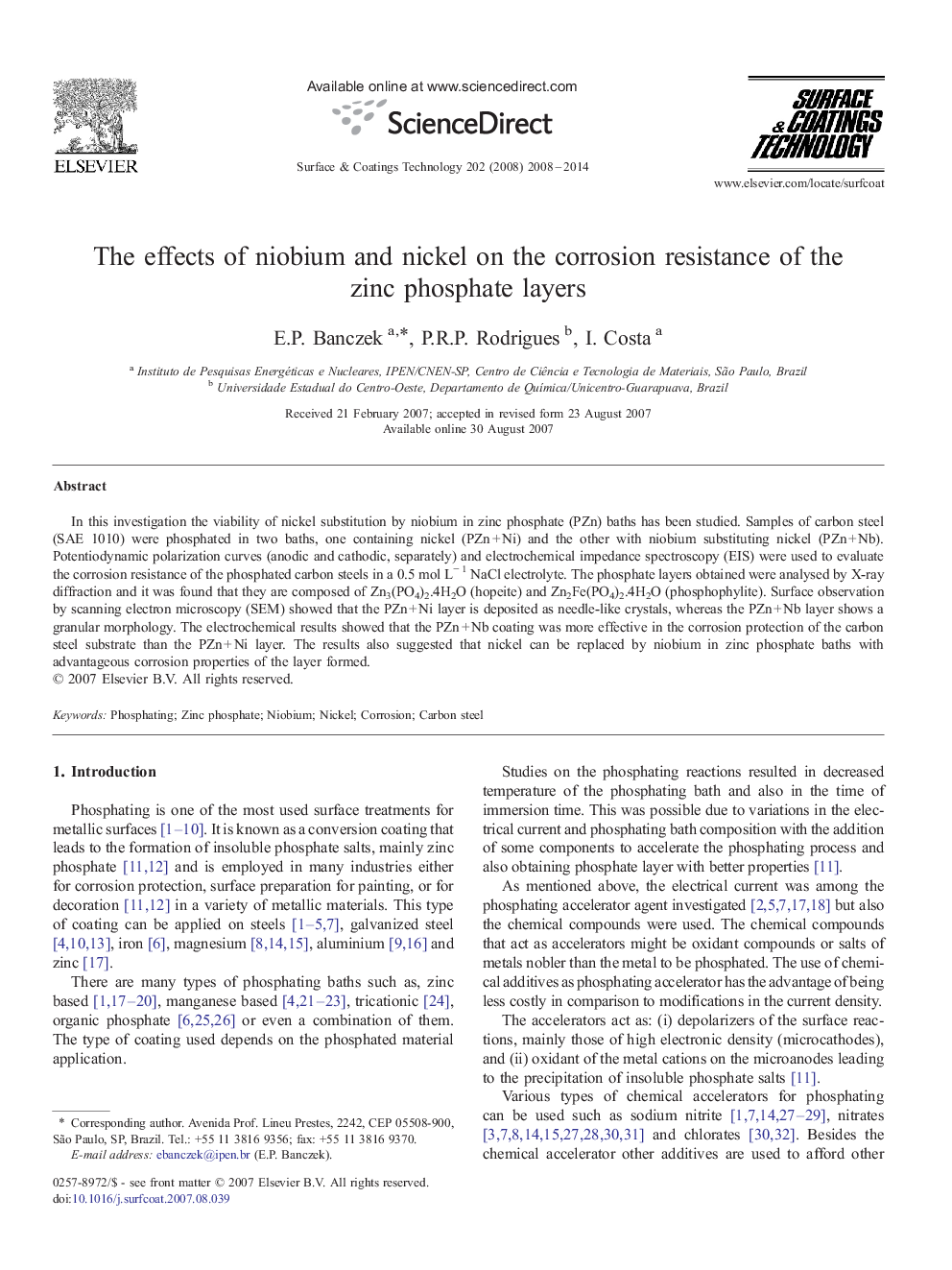| Article ID | Journal | Published Year | Pages | File Type |
|---|---|---|---|---|
| 1661748 | Surface and Coatings Technology | 2014 | 7 Pages |
In this investigation the viability of nickel substitution by niobium in zinc phosphate (PZn) baths has been studied. Samples of carbon steel (SAE 1010) were phosphated in two baths, one containing nickel (PZn + Ni) and the other with niobium substituting nickel (PZn + Nb). Potentiodynamic polarization curves (anodic and cathodic, separately) and electrochemical impedance spectroscopy (EIS) were used to evaluate the corrosion resistance of the phosphated carbon steels in a 0.5 mol L− 1 NaCl electrolyte. The phosphate layers obtained were analysed by X-ray diffraction and it was found that they are composed of Zn3(PO4)2.4H2O (hopeite) and Zn2Fe(PO4)2.4H2O (phosphophylite). Surface observation by scanning electron microscopy (SEM) showed that the PZn + Ni layer is deposited as needle-like crystals, whereas the PZn + Nb layer shows a granular morphology. The electrochemical results showed that the PZn + Nb coating was more effective in the corrosion protection of the carbon steel substrate than the PZn + Ni layer. The results also suggested that nickel can be replaced by niobium in zinc phosphate baths with advantageous corrosion properties of the layer formed.
